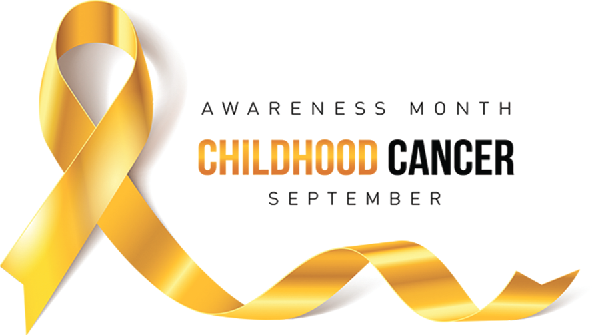
Childhood cancer awareness month - WCC advocates frequent screening, early treatment
September has been designated childhood cancer awareness month to raise awareness of childhood cancer, which remains the leading cause of death by disease for children under the age of 14.
Health experts say early detection is key to saving the life of a child with a cancer, an often life-threatening illness, and have therefore called on parents to take their children for screening.
Advertisement
Additionally, the World Child Cancer (WCC), an international non-governmental organisation, working to improve diagnosis, access to treatment and quality of support for children with cancer, and their families, in the low and middle income world, has asked parents to often look out for swells on parts of the body, which could be warning signs, but not necessarily a sign of cancer.
Its Regional Coordinator for Sub Saharan Africa, Mr. Emmanuel Ayire Adongo, on behalf of the organisation asked to seek early medical care for their children who showed signs, and symptoms of cancer.
The month
Every year, the world celebrates September as the childhood cancer awareness month.
The commemoration helps to highlight the impact of cancer on children, young people and their families.
Through vital awareness-raising activities and ground-breaking childhood cancer research, we can help save young lives and keep families together.
Childhood cancer awareness is marked by organisations around the world with several activities and the use of a gold ribbon; with the explanation that gold is a precious metal that goes through fire to become more refined.
It better symbolised what children with cancers go through.
Mr. Adongo said the organisation believed that no matter where they were born, no child should be left to die of a painful illness when they could be cured with relatively simple and affordable treatments.
He said the lack of awareness and understanding of childhood cancer and the inability of local healthcare workers to spot early warning signs and symptoms contributed to the many cases recorded globally, particularly, in low-income countries.
Childhood cancers
Childhood cancer is a term used to describe cancers that occur between birth and 15 years of age. They may differ from adult cancers in the way they grow and spread, how they are treated and how they respond to treatment.
Also known as paediatric cancer, the common types include leukemia (begins in blood-forming tissue such as bone marrow), lymphoma (begins in the cells of the immune system), neuroblastoma (begins in certain nerve cells), retinoblastoma (begins in the tissues of the retina), Wilms tumor (a type of kidney cancer), and cancers of the brain, bone, and soft tissue.
Symptoms
Signs associated with childhood cancers include continued unexplained weight loss; headaches, often with early morning vomiting; increased swelling or persistent pain in the bones, joints, back, or legs; Lump or mass, especially in the abdomen, neck, chest, pelvis, or armpits; Development of excessive bruising, bleeding, or rash.
Others include constant, frequent or persistent infections; a whitish colour behind the pupil; nausea that persists or vomiting without nausea; constant tiredness or noticeable paleness; eye or vision changes that occur suddenly and persist; recurring or persistent fevers of unknown origin.
But remember that these signs and symptoms may not necessarily be cancer since there are other diseases that present with the same symptoms.
However, it is important that a doctor conducts further checks to give you the appropriate treatment.
Approximately 80 per cent of children with cancer in high-income countries (HICs) would survive at least five years after diagnosis while less than 20 per cent of children with cancer from low-middle-income countries would be cured.
“As a non-state actor in official relations with the World Health Organisation (WHO), the Ministry of Health and Ghana Health Service, WCC works alongside the WHO’s Global Initiative for Childhood Cancer which was launched in September 2018 to increase the global childhood cancer survival rates to at least 60 per cent by 2020 and eliminate treatment-related pain and suffering,” Mr. Adongo said.
“It is important to note that the above signs and symptoms may be similar to other medical conditions. However, when you see any of the above signs and symptoms, report to the nearest health facility for check up,” he said.
The two main treatment centres for childhood cancers are the Korle Bu Teaching Hospital and the Komfo Anokye Teaching Hospital.
However, Mr. Adongo said the Tamale Teaching Hospital, Cape Coast Teaching Hospital, Agogo Presbyterian Hospital and the Greater Accra Regional Hospital also provided care for childhood cancer patients.
He expressed the hope that through awareness raising activities and ground-breaking childhood cancer research, the lives of children could be saved from cancers and their families kept together.
“It is our hope that Ghana will join the world to celebrate this month by increasing awareness of childhood cancers through the “Light It Up Gold!” campaign. Health facilities and media houses could be lit up gold or proudly display the gold ribbon; which is the international symbol of childhood cancer awareness,” he said.



